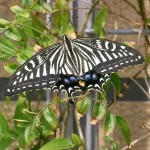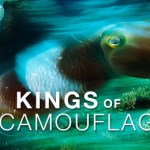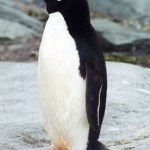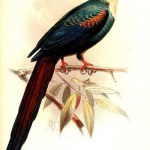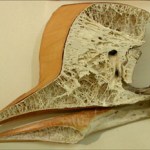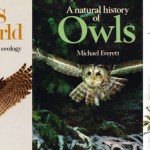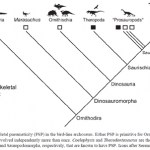Life Sciences
AT&T sponsored Nifty Fifty program speaker and widely acclaimed science writer Carl Zimmer just published this very interesting New York Times piece on "...a small but growing number of field biologists who study urban evolution -- not the rise and fall of skyscrapers and neighborhoods, but the biological changes that cities bring to the wildlife that inhabits them. For these scientists, the New York metropolitan region is one great laboratory." Carl brings to light recent findings on mice stranded on isolated urban islands that are evolving to adapt to urban stress, fish in the Hudson…
A proposal has been made to remove beloved Archaeopteryx from the bird family tree and push it over to some non-avian dinosaur subtree. This is not the first time that the ancient species has had its position on the tree of bird life threatened, but this time it may be for real. The proposal is reasonable.
I've talked about this issue before, but I'm bringing it up now because there is a new paper, just out. Lets get right down to business and start with the abstract:
Archaeopteryx is widely accepted as being the most basal bird, and accordingly it is regarded as central to understanding…
In discussing the National Science Board's latest stand on whether to report evolution literacy, and how to do so, I didn't get into the details of Jon Miller's concerns. Chris Mooney quotes that passage from the Science report, and raises some concerns.
Science reported that the NSB will, in the 2014 Science and Engineering Indicators, report results of two questions: the standard true/false "Human beings, as we know them today, developed from earlier species of animals" and another version in which people are asked "according to evolutionary theory, human beingsâ¦." An experiment with that…
Photo: KENPEI, Wikimedia Commons.
Researchers have isolated an antimicrobial peptide from swallowtail butterflies, Papilio xuthus (image above). After creating a synthesized version of the peptide they called Papiliocin, they wanted to know how it worked. What they found was that Papiliocin causes yeast cells (Candida albicans) to accumulate reactive oxygen species, which triggers a process called apoptosis, or programmed cell death. To see a neat video describing apoptosis, click here.
Papiliocin is not only an anti-fungal. This versatile peptide is also antibacterial, although…
I've received a couple of shocked emails from people lately, about something called Dinosaur World. It's a set of three theme parks, in Plant City, Florida, Cave City, Kentucky, and Glen Rose, Texas (that last one probably set off alarm bells already) which feature life-size fiberglass and concrete dinosaurs in a park-like setting. They also have a web site and blog which has some popular appeal: all of the entries in the blog are short descriptions of dinosaurs, with a photo, geared to the level a young child could understand. Here's an example:
Maiasaura was a large, plant-eating, duck-…
I watched an amazing Nova special on cuttlefish, a relative of octopus. These animals really are the "Kings of Camouflage!" I have seen animals that can change colors to match their environments, but I have never seen one able to produce moving colors or to contort their bodies to mimic objects in their environment, like seaweed. Even more amazing is that researchers have discovered one species, the flamboyant cuttlefish, that is actually poisonous which explains why they are brave enough to walk around the ocean floor instead of swim like their cousins. Researchers are currently examining…
As folks who follow me on twitter know, today was a pretty good day in Texas. I'm here watching the board vote on science supplements for public schools. I put together a 20 page report on the flaws in a supplement provided by International Databases, LLC, and presented it to the board. Most of the speakers opposed the ID, LLC supplement, and urged adoption of the supplements recommended by expert review committees.
As often happens, board member Ken Mercer asked many of the folks who testified a series of carefully crafted questions, meant somehow to trap them. It wasn't totally obvious…
OK, I'm feeling guilty: I'm off at The Amaz!ng Meeting enjoying myself, and totally neglecting the blog readers who aren't lucky enough to be here too. And since I've been getting lots of requests to put the full content of my talk online, I figured…yeah, sure, I can do that. So here you go, all of the slides and what I said about them, mostly, below the fold. Criticize and argue and do your usual.
TAM is a tough crowd for me: it's a meeting where the emphasis is always on the space sciences, especially this year with a theme that just crows about astronomy, and I'm a biologist. It doesn't…
They keep dragging me back in. I try to drop it, but my inbox is full of people still arguing this point, and it's getting ridiculous. The thing is, they keep throwing godawfully bad arguments at me, as if they're trying to hit me in the head with a brick enough times to make me stupid enough to believe them. It's not going to work. Here are a few of the worst of the bad arguments.
Let's stop the shouting that Richard Dawkins is some kind of raving misogynist. What's happened here is that he is at some remove from all of the details, and this issue got blown up by lunatics who felt their…
Humans appear to have a reasonable amount of diversity in their sexual orientations, in what is often referred to as "gender" and in adult behavior generally. When convenient, people will point to "genes" as the "cause" of any particular subset of th is diversity (or all of it). When convenient, people will point to "culture" as the "cause" of ... whatever. The "real" story is more complicated, less clear, and very interesting. And, starting now, I promise to stop using so many "scare" quotes.
Prior to birth there are a number of factors than can influence things like gender or sexuality…
Behaviors are not caused by genes. There is not a gene that causes you to be good, or to be bad, or to be smart, or good at accounting, or to like bananas. There are, however, drives. "Drives" is a nicely vague term that we can all understand the meaning of. Thirst and hunger are drives we can all relate to. In fact, these drives are so basic, consistent and powerful that almost everyone has them, we share almost exact experiences in relation to them, and they can drive (as drives are wont to do) us to do extreme things when they are not met for long periods of time. While eating…
Image source: The American Physiological Society.
I just read an amazing review article written by George Somero from the Department of Biology at Stanford University on how the field of comparative physiology may be used as a crystal ball to predict how different species will respond to global changes. Some changes that may impact species include temperature, salinity, pH, and oxygen levels. For these studies, scientists often examine closely related species that are adapted to different environments to see how they differ physiologically and behaviorally.
Changes in biogeographic…
The always-wonderful Matron of Husbandry has a lovely post about pasture diversity and grass-feeding that did better (and purtier - she always has lots of great pix) something I've been meaning to do - ie, explore what you learn from grass farming that no one else teaches. For all the books I've read about grazing, I don't learn nearly as much by simply watching my animals and my pastures. I suspect this is true for everyone.
I think the single best thing I have learned from rotational grazing is I didn't know what I thought I knew about grass and cows. Namely what I think looks good is…
Anyone who has seen the movie March of the Penguins knows that these animal undergo long periods of fasting. There are actually 3 stages of fasting in birds.
Phase I: This is a short phase in which they burn stored fat for energy.
Phase II: In this long phase, animals are constantly losing body mass and trying to spare proteins. Fat continues to be the main source of energy.
Phase III: Animals enter this phase if fat reserves start running low. This is when changes in hormones and metabolism occur resulting in a switch from using fats to using proteins for energy. Along with the…
Because you can never get too much hemolytic uremic syndrome. Erm, that didn't come out right. Look over there! Links! Science:
Hemolytic uremic syndrome (HUS) in history--part 4: the bigger picture
Epidemiology and social media: conference fail
E. coli: Some Answers, Many Questions Still
Low-calorie diet offers hope of cure for type 2 diabetes
Other:
Social Security and Medicare Cuts: Washington's War on the Young
Why being vegetarian can kill more animals than eating meat
Development Roundup: demand for high-end housing is leading Boston developers to propose new apartment buildings.…
Yet more from that book project (see the owl article for the back-story, and the hornbill article for another of the book's sections).
Hornbills, hoopoes and woodhoopoes are all similar in appearance and have been classified together in a group termed Bucerotes. Vague similarities with other long-billed, forest-dwelling birds (like woodpeckers, long-billed cuckoos and such passerines as tree-creepers) meant that early ornithologists were often confused about the affinities of these birds. By the late 1800s, however, most had realised that all three were close relatives, and that they were…
Writing in The New York Times, Tim Kreider wonders if the immediate availability of information has robbed us of the romance of not knowing:
Instant accessibility leaves us oddly disappointed, bored, endlessly craving more. I've often had the experience of reading a science article that purported to explain some question I'd always wondered about, only to find myself getting distracted as soon as I started reading the explanation. Not long ago the Hubble telescope observed that Pluto's surface is changing rapidly, and noticeably reddening. It's not a bland white ball of ice, but the color of…
More from the bird book. For the back-story, see the previous owls article.
Hornbills are among the most distinctive and spectacular of Old World tropical birds. Often flaunting bright colours and sometimes reaching huge sizes (the largest species have wingspans of 1.8 m), they're well known for their enormous, curved bills and large bony crests. [Image above shows Great Indian hornbill skeleton Buceros bicornis (l) and male Wreathed hornbill Rhyticeros undulatus (r) (by Blijdorp, from wikipedia). Hornbills like the Great Indian hornbill are forest-dwelling omnivores that eat fruit as well…
There's something they don't tell you about freelance writing. It's about all the fails: the many, many projects that get pitched, worked on and made into proper presentations that then get sent to book fairs, interested companies and so on, but ultimately explode on the launch pad, or die a slow, lingering death. I don't know if it's that I'm especially unlucky, or if it's that I've pitched an unusually high number of books, or if it's that I've genuinely worked on a high number of projects that were never destined to succeed but, whatever, I've now worked on loads of failed book projects.…
One of the strangest Mesozoic dinosaurs ever described has to be the African iguanodontian Lurdusaurus arenatus, named in 1999 for remains from the Lower Cretaceous Elrhaz Formation of Gadoufaoua, Niger (Taquet & Russell 1999). The Elrhaz Formation has also yielded the sail-backed iguanodontian Ouranosaurus, the rebbachisaurid sauropod Nigersaurus, the theropods Kryptops, Suchomimus and Eocarcharia, and the crocodilians Anatosuchus and Sarcosuchus. [Adjacent Lurdusaurus image by Luis Rey, used with permission.]
As is well known among dinosaur researchers, Lurdusaurus was first…


